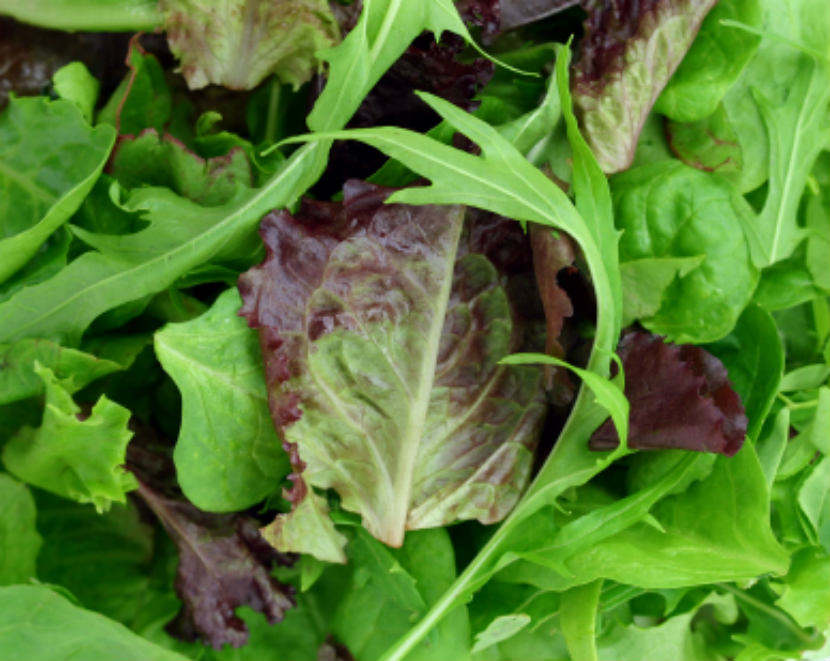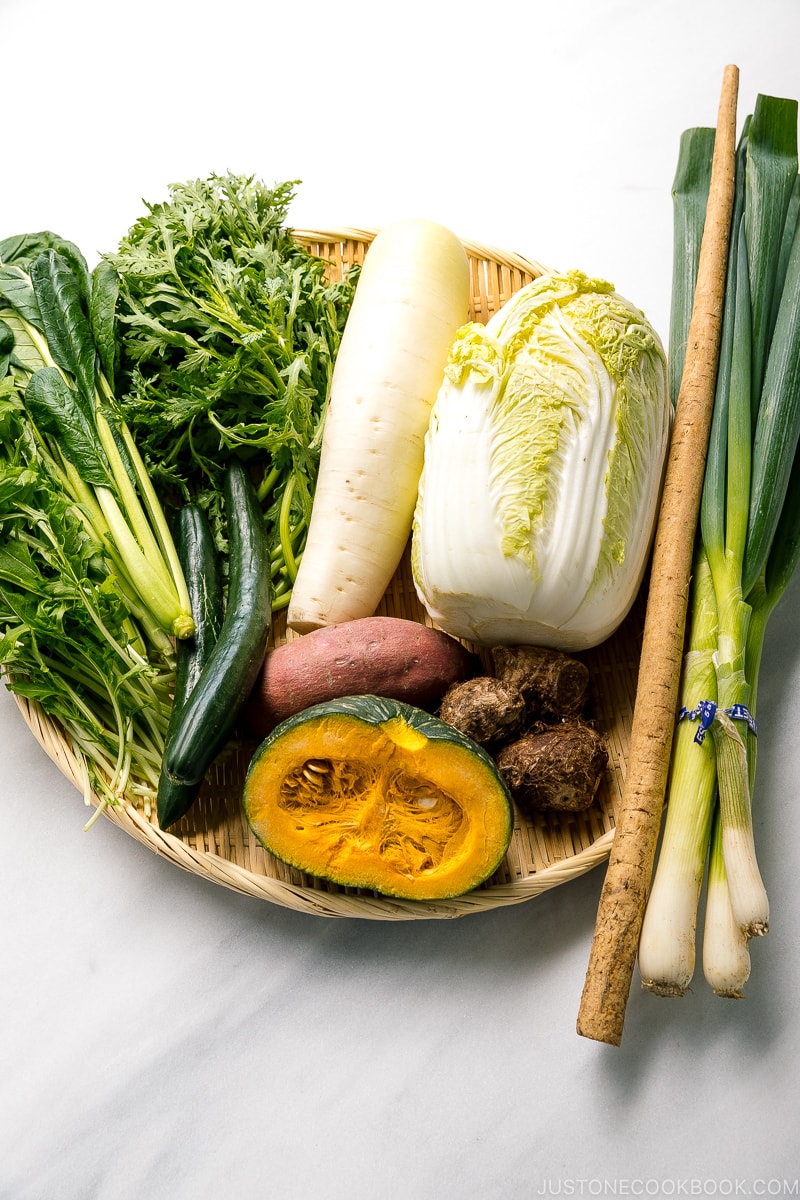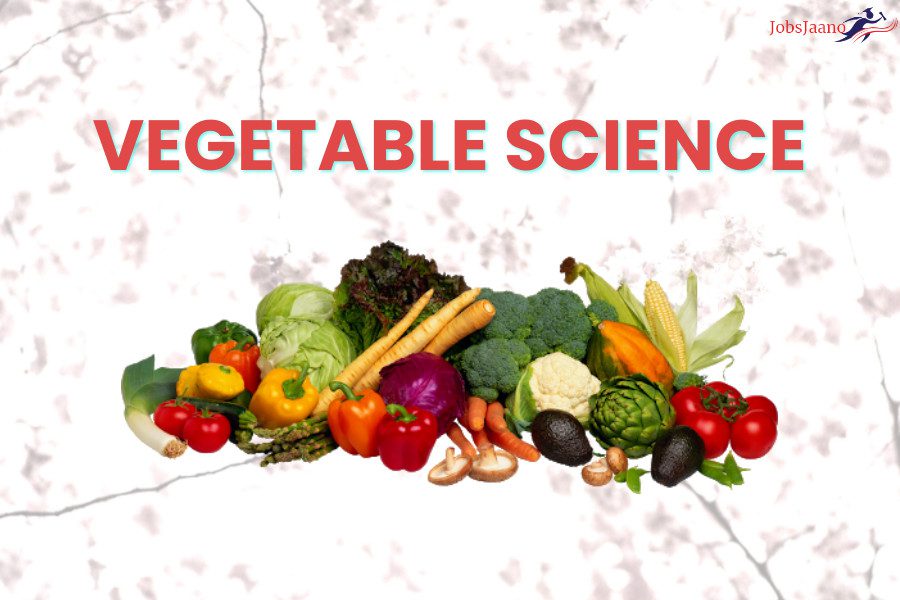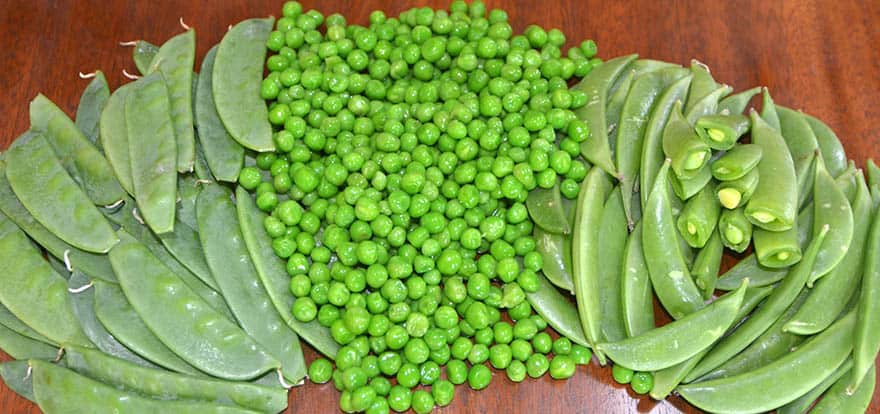VEGETABLE SCIENCE QUIZ
Here in this post (Vegetable Science Multiple Choice Questions and Answers | Olericulture | Agriculture Competitive Exams) we are going to cover vegetable science multiple choice questions and answers, olericulture, Agriculture competitive exam knowledge. little bit information and quiz is given below.
Salsify

Salsify goes well with a variety of foods. Salsify should be kept in a secure location that is easy to get to and cook.
Among salsify’s many health advantages include its ability to combat cancer, strengthen the immune system, lower blood pressure, and support the formation of bifidobacteria.
Dark Leafy Greens

Types Of Peas
English peas, sugar snap peas and snow peas, are the three main types of peas.
Snow Peas Nutrition
|
Nutrients |
Amount |
|
Calories |
42 |
|
Carbs |
7.5 Grams |
|
Fiber |
2.6 Grams |
|
Vitamin C |
100% of the Daily Value |
|
Potassium |
6% of the Daily Value |
|
Protein |
2.8 Grams |
|
Folate |
10% of the Daily Value |
|
Manganese |
12% of the Daily Value |
|
Magnesium |
6% of the Daily Value |
|
Phosphorus |
5% of the Daily Value |
|
Vitamin K |
31% of the Daily Value |
|
Vitamin A |
22% of the Daily Value (DV) |
Root Vegetables
Potatoes, Onions and shallots, Carrots, Sweet potatoes, Turnips, Parsnips, Beets, and Radishes are different root vegetables.
Japanese Vegetables

Beans Vegetable

1. Anthranose resistant variety of French bean is:
a. Contender
b. Kentucky Woder
c. Tweed Wounder
d. None of these
Ans. c
2. The best suitable storage condition for fresh unshelled peas is:
a. 5 degree C and 85% RH.
b. 0 degree C and 90-95% RH.
c. 15 degree C and 60-70% RH.
d. None of the above
Ans. b
3. Fruits of vegetables marrow are ready for first picking after:
a. 40-50 days
b. 60-80 days
c. 70-80 days
d. None of these
Ans. b
4. Fungicide for controlling powdery mildew diseases of pea is:
a. capatan
b. indofil M-45
c. Karathane
d. none of these
Ans. b
5. Garden beet belongs to the genus of:
a. Brassica
b. Beta
c. Raphanus
d. None of these
Ans. b
6. Pumpkin as well as squashes do best at a soil pH of:
a. 4.0-5.5
b. 6.0-6.5
c. 7.5-8.5
d. none of these
Ans. b
7. Most suitable time for sowing of Pisa Chetki Variety of radish is:
a. March-August
b. October- November
c. After November
d. None of the above
Ans. a
8. Which of the following variety of Brassica pekninensis is a useful leafy vegetable for plains and hills of North India?
a. Chinese
b. American
c. Canadian
d. Japanese
Ans. d
9. Protein content of Guar meal is about:
a. 11.3%
b. 22.2%
c. 33.3%
d. 44.4%
Ans. c
10. In which year, Pusa Bedana variety of watermelon was reeased?
a. 1970
b. 1969
c. 1972
d. 1989
Ans. c
OLERICULTURE
11. Which of the following pointed ground numbers are enough to plant an area of one hectare?
a. 20000
b. 30000
c. 40000
d. 50000
Ans. d
12. Which of the following type of vegetable gardening is followed in Dal Lake of Kashmir Valley?
a. Floating garden
b. Hydroponiocs
c. Kitchen garden
d. None of these
Ans. a
13. “Durgapura Kesar” is an important cultivator of:
a. Musk melon
b. Water melon
c. Cucumber
d. Bottle goud
Ans. b
14. Which of the following is YUMV resistant?
a. Pusa Makhmali
b. Pusa Sawami
c. Punjab No.8
d. None of these
Ans. b
15. Which of the following variety of winter squash has been recommended from IARI?
a. Arka Chandan
b. Arka Suryamukhi
c. Large red
d. None of the above
Ans. b
16. Which of the following variety is tolerant to fruit borer?
a. Punjab Neelam
b. Punjab Barsati
c. Jamuni Gola
d. None of these
Ans. b
17. Which of the following planting ratio of females to male gives good fruit yielding of parval?
a. 15-20 to 1
b. 30-40 to 1
c. 1 to 1
d. None of these
Ans. a
18. For growing carrot, radish and turnip for table purpose, sowing is done at a spacing of:
a. 45 * 30 cm
b. 30 * 15 cm
c. 45 * 20 cm
d. None of these
Ans. d
19. For induction of reater number of female flowers in watermelon, spray seedings at 2-4 leaf stage with 2,4,5-triiodobenzoic acid at a concentration of:
a. 10-15 ppm
b. 25-50 ppm
c. 50-100 ppm
d. none of these
Ans. b
20. Cucumber fruits can be stored for longer period at the temperature of:
a. 5 degree C
b. 10 degree C
c. 25 degree C
d. None of these
Ans. c
VEGETABLE MCQs
21. Cluster bean is sown at a spacing of:
a. 75*60 cm
b. 60*45 cm
c. 45*20cm
d. none of these
Ans. c
22. Cluster bean is:
a. Self-pollinated
b. Cross-pollinated
c. Often ross-pollinated
d. None of these
Ans. a
23. Colour of Pusa Sweti variet of turnip is:
a. Red
b. Golden
c. White
d. None of these
Ans. c
24. Cowpea is probably a native of:
a. India
b. China
c. Central Africa
d. None of these
Ans. c
25. Vegetables are rich source of:
a. Vitamins
b. Carbohydrates
c. Proteins
d. Fat
Ans. a
26. Vegetables are generally subjected to drying after:
a. Blanching
b. Without blanchinf
c. Sulphuring
d. Any other means
Ans. a
27. Sweet potato vine cuttings are planted at a spacing of:
a. 60*3 cm
b. 100*60 cm
c. 150*60 cm
d. None of these
Ans. a
28. Virus disease of chilli are spread by:
a. White flies
b. thrips
c. aphids
d. None of these
Ans. a
29. Vitamin C content in French bean is enhanced with the application of:
a. Zinc
b. Iron
c. Copper
d. None of these
Ans. a
30. Watermelon can grow well on acidic soil with pH of:
a. 4.0
b. 5.0
c. 6.0
d. None of these
Ans. b
VEGETABLE SCIENCE MCQs
31. Chenopodiaceae is the family of:
a. Potato
b. Sweet Potato
c. Okra
d. Spanish
Ans. d
32. Chilly hybrid-1(CH-1) was evolved by:
a. CSAUA & 1 (Kanpur)
b. PAU (Ludhiana)
c. CCHAU (Hissar)
d. IARI (New Delhi)
Ans. b
33. Which of the following is an early variety of cauliflower?
a. Pusa Katki
b. Synthetic second
c. Snowball-16
d. None of these
Ans. a
34. Which of the following is a true vegetable crop?
a. Sweet potato
b. Okra
c. Potato
d. Spanish
Ans. b
35. Which one is not correctly matched?
a. Ginger- Rhizome
b. Garlic- Bulb
c. Potato- Tuber
d. Sweet potato- Stolen
Ans. d
36. Which of the following seed rate of TPS is recommended for one hectare area?
a. 150 g
b. 250 g
c. 350 g
d. 450 g
Ans. a
37. Tomato variety RKMT is evolved through:
a. X-rays
b. Gamma rays
c. EMS
d. MMS
Ans. a
38. Which of the following colour of flower is produced by Trigonella foenum graecum (Common methi) ?
a. White
b. red
c. purple
d. orange to yellow
Ans. a
39. Potato tuber production stops totally at a temperature of:
a. 25 degree C
b. 30 degree C
c. 35 degree C
d. None of these
Ans. b
40. Turnip belongs to the family?
a. Umbelliferae
b. Chnopodiaceae
c. Cruciferae
d. None of these
Ans. c
MULTIPLE CHOICE QUESTIONS ON VEGETABLES AND FRUITS SCIENCE
41. Cracking of tomato fruit is brought about by:
a. restricted watering
b. a period of drought followed by sudden heavy watering
c. over watering
d. insufficient watering
Ans. b
42. Punjab-8, variety of Okra has been evolved by:
a. interspecific hybridization
b. irradiation induced mutation
c. chemical induced mutation
d. None of the above
Ans. c
43. Great Lake is a variety of:
a. butter head lettuce
b. leaft type lettuce
c. crisp head lettuce
d. none of these
Ans. c
44. Potato crop is planted at a spacing of:
a. 45*30 m
b. 60*15-20 cm
c. 75-10 cm
d. none of these
Ans. b
45. Potato is a rich source of Vitamin:
a. A
b. B
c. C
d. D
Ans. c
46. Seed rate of Musk melon crop is:
a. 1.5-2.0 kg/ha
b. 3.0-4.0 kg/ha
c. 6.0-7.0 kg/ha
d. 7.0-7.5 kg/ha
Ans. a
47. Whiptail in cauliflower is caused by:
a. excess of boron
b. deficiency of boron
c. exxess of molybdenum
d. deficiency of molybdenum
Ans. d
48. Who studied the heterosis in brinjal?
a. B.S. Tomar
b. H.Singh and T.S. Kaider
c. N. Basuvaraja
d. All of the above
Ans. d
49. First intergenic cross between radish and cabbage was made by:
a. Jennings
b. Karpenchenko
c. Hull
d. Richy
Ans. b
50. Flat head or drum head and savoy types cabbage cultivars have ……………… maturity.
a. early
b. mid
c. late
d. None of these
Ans. c
VEGETABLE SCIENCE NET QUESTIONS
51. For a balanced diet, the dieticians have recommended daily consumption of leafy vegetables to the tune of:
a. 50g
b. 125g
c. 250g
d. 120g
Ans. b
52. Coefficient of variance is calculated by the formula of:
a. SD/Mean
b. Mean SD
c. SD/Mean*100
d. Mean SD*100
Ans. c
53. Student’s t-test was discovered by:
a. F.Yates
b. R.A. Fischer
c. W.S. Gosset
d. P.C. Mahalanobis
Ans. c
54. The significance of difference between two means can be tested by using the formula of:
a. Chi- square test
b. t-test
c. f-test
d. none of these
Ans. d
55. The value of 2 value always lies between:
a. 0 to infinite
b. 0 to +1
c. -1 to 0
d. -1 to +1
Ans. a
56. SL -120, semi determinate variety of tomato was evolved by:
a. GB PUAT
b. PAU
c. IARI
d. IIHR
Ans. c
57. Directroate of Vegetable Research is situated in:
a. Bhopal
b. New Delhi
c. Varanasi
d. Ludhiana
Ans. c
58. In potato crop earthing is done after sowing of:
a. 20 days
b. 40 days
c. 50 days
d. none of these
Ans. b
59. The largest chilli growing state is:
a. Madhya Pradesh
b. Tamil Nadu
c. Andhra Pradesh
d. Rajasthan
Ans. c
60. The most ancient type of garden is:
a. Kitchen garden
b. market garden
c. vegetable garden
d. floating garden
Ans. a
VEGETABLE PRODUCTION QUESTIONS
61. The most common leaf vegetable grown in India during summer is:
a. Amarnath
b Portulaca
c. Indian spinach
d. Spinach
Ans. a
62. Great lakes is a variety of:
a. crips head lettuce
b. butter head lettuce
c. leaf type lettuce
d. none of these
Ans. a
63. Haulms in potato seed crop are cut during:
a. End of December or first week of January
b. Second fortnight of January
c. First fortnight of February
d. none of the above
Ans. a
64. Heterosis in bottle gourd was reported in a number of crosses by:
a. I.D. Tyagi(1973)
b. V.S. Seshadri(1988)
c. G.S. Gill(1980)
d. U.K. Verma(1985)
Ans. b
65. The most serious disease of tomato in the rainy and autumn season is:
a. TMV
b. CMV
c. Leaf curl
d. tomato spotted wilt virus
Ans. d
66. The most serious disease of okra is:
a. yellow vein mosaic
b. powdery mildew
c. root rot
d. none of the above
Ans. a
67. The most troublesome insect pest of lettuce is:
a. leaf miner
b. aphid
c. painted bug
d. none of these
Ans. b
68. Highest pod yield in french bean is obtained at a soil pH of:
a. 5.3-6.0
b. 6.0-7.0
c. 7.5-8.5
d. none of these
Ans. a
69. Which of the following vegetable is perennial?
a. Asparagus
b. cauliflower
c. garlic
d. Indian bean
Ans. a
70. Which of the following vegetable has highest amount of vitamin A ?
a. Amaranath
b. carrot
c. cauliflower
d. lettuce
Ans. a
OBJECTIVE VEGETABLE SCIENCE
71. ‘Suverna’ is a popular variety of:
a. Coariander
b. Fenugreek
c. Pumpkin
d. Pointed groud
Ans. b
72. Cytoplasmic male sterility is used for hybrid seed production in:
a. Brinjal
b. Okra
c. Onion
d. tomato
Ans. c
73. Powdery mildew disease is caused by:
a. Bacteria
b. Fungus
c. Virus
d. none of these
Ans. b
74. “Buck eye rot” is associated with:
a. Tomato
b. Pea
c. Sweet Potato
d. Brinjal
Ans. a
75. “Browning” in cauliflower is due to:
a. Bo deficiency
b. N deficiency
c. Mo deficiency
d. Zn deficiency
Ans. a
76. Vegetables are mostly canned in :
a. Brine
b. Syrup
c. Water
d. All of these
Ans. a
77. “Little Leaf” disease of brinjal is caused by:
a. Bacteria
b. Fungus
c. Mycoplasma
d. Virus
Ans. c
78. “Phomosis blight” resistant variety of brinjal is:
a. Azad Kranti
b. Pusa Komal
c. Pant Samart
d. Pant Rituraj
Ans. c
79. Optimum monthly temperature for New Zealand Spinach is:
a. 10-12 degree C
b. 12-15 degree C
c. 15-18 degree C
d. 20-22 degree C
Ans. d
80. Protogyny condition is found in:
a. Onion
b. Cucumber
c. Tomato
d. Cabbage
Ans. a
HORTICULTURE MULTIPLE CHOICE QUESTIONS
81. Minimum monthly temperature for asparagus is:
a. 10 degree C
b. 5 degree C
c. 15 degree C
d. 1 degree C
Ans. d
82. Best storage temperature for tomato is:
a. 8-10 degree C
b. 12-15 degree C
c. 18-20 degree C
d. 20-2 degree C
Ans. b
83. Bottle groud is originated from:
a. Africa
b. India
c. C. America
d. Indonesia
Ans. a
84. Leaf crul resistant tomato variety is:
a. Siou
b. Punjab Chhuhara
c. S-12
d. Hisar Anmol
Ans. d
85. Hybrid vegetable grows maximum in:
a. Brinjal
b. Tomato
c. Cabbage
d. None of these
Ans. b
86. ‘Petha’ is prepared from:
a. 5.1%
b. 8.3%
c. 7.2%
d. 9.0%
Ans. c
87. Pusa Meghna is a variet of:
a. Cow pea
b. Watermelon
c. Carrot
d. Cauliflower
Ans. d
88. Parent of Pusa Sanjog is:
a. Japanese Gynoecious lines*Green Long Naples
b. Japanese Long Green*Himangi
c. Poinsett*Green Long Naples
d. Sheetal*Himangi
Ans. a
89. Catface is a physiological disorder of:
a. Brinjal
b. Potato
c. Cauliflower
d. Tomato
Ans. d
90. Carbohydrates content in potato (in 100g) is:
a. 15.4g
b. 22.6g
c. 17.8g
d. 31.6g
Ans. b
91. Sprouting of potato can be controlled by a pre harvest spray of:
a. IBA
b. MH
c. CCC
d. None of these
Ans. b
92. ICMR recommended per caita consumption of vegetable in a day:
a. 175 g degree C
b. 250 g degree C
c. 285 g degree C
d. 300 g degree C
Ans. d
93. Optimum temperature for onion bulb formation is:
a. 10-12 degree C
b. 20-22 degree C
c. 15-18 degree C
d.None of these
Ans. b
94. Bitter principle in Luffa is:
a. Luffein
b. Momordicin
c. Cucurbitacin
d. None of these
Ans. a
95. Double cross hybrid in cabbage is suggested by:
a. Davis and Richey
b. Odland and Nle
c. Meredith and Bridge
d. Singleton and Nelson
Ans. b
96. Stemphyllium blight is a major disease in :
a. Potato
b. Tomato
c. Onion
d. Okra
Ans. c
97. Temperature requirement for curd intitation of snow ball type cauliflower is:
a. 10-16 degree C
b. 7-9 degree C
c. 18-20 degree C
d. None of these
Ans. a
98. Yellow color of beet is due to:
a. -Carotence
b. _Carotence
c. -Xanthence
d. Lycopene
Ans. c
99. Genetic constitution of maintainer line in onion HSP:
a. Smsms
b. Mmsms
c. NMsms
d. SMsMs
Ans. b
100. Stamin number in onion is:
a. 4
b. 8
c. 9
d. 6
Ans. d
101. Highest Vitamin is found in:
a. Broccoli
b. Cabbage
c. Sweet prepper
d. Amarnath
Ans. c
102. Onion pungeny is due to:
a. Allyl Propyl disulphide
b. Dimethyl trisulphide
c. Diallyl disulphide
d. Quercetin
Ans. a
103. Multistyle flower is common in:
a. Tomato
b. Cauliflower
c. Brinjal
d. Chilli
Ans. c
104. Chromosome number of Cucumber is:
a. 2n=14
b. 2n=24
c. 2n=18
d. 2n=12
Ans. a
105. Bitterness of brinjal is due to:
a. Solanine
b. Momordacine
c. Solasodine
d. None of these
Ans. c
106. Chromosome number of Palak is:
a. 2n=16
b. 2n=22
c. 2n=26
d. 2n=12
Ans. a
107. High and low temperature for fruit setting tomato variety is:
a. Pusa Sheetal
b. Pusa Ruby
c. Pusa Gaurav
d. Pusa Sadabahar
Ans. d
108. Marsh spot in pea is due to:
a. Cu deficiency
b. Ca deficiency
c. Zn deficiency
d. Mn deficieny
Ans. d
109. Which of the following is not matched correctly ?
a. Pusa Sadabahar-Tomato
b. Pusa Jyoti-Watermelon
c. Pusa Sawami-Okra
d. Pusa Naveen-Bitter grourd
Ans. d
110. In which of the following vegetable first hybrid was released?
a. Tomato
b. Chilli
c. Bottle grourd
d. Cowpea
Ans. c
111. Which of the following is a causal organism of common scab of potato:
a. Rhizoctpnia solani
b. Streptomyces scabies
c. Pseudomonas solanceanum
d. Sponospora subterraneam
Ans. b
112. Cauliflower curd can be stored for one month at:
a. 0 degree C and 85-90%RH
b. 10 degree C and 70-80%RH
c. 15 degree C and 60-70%RH
d. None of these
Ans. a
113. Which of the following is/are necessary for successful vegetable production?
a. Better seed
b. Improved cultural practices
c. Better plant protection
d. All of these
Ans. d
114. The purgency in chillies is due to:
a. Capsicin
b. Coumasin
c. Quercetin
d. Capsanthin
Ans. a
115. The tomato sp. which have the upright fruiting is:
a. Lycopersicon esulentum
b. Lycopersicon validium
c. Lycopersicon pyrifomac
d. Lycopersicon cerasifome
Ans. b
116. Which one of the following country is having the first rank in area and production of garlic?
a. India
b. Burma
c. China
d. Japan
Ans. c
117. Solanum tuberosum is a:
a. Haploid
b. Diploid
c. Tetraploid
d. None of these
Ans. c
118. Which of the following vegetable in not a C3 crop?
a. Sweet potato
b. Amarnath
c. Tomato
d. Lettuce
Ans. b
119. Which of the following factor affects the storage life of vegetables?
a. Maturity stage at harvesting
b. Temperature of storage
c. Humidity of storage
d. All of the above
Ans. d
120. In tomato, blossom end rot is caused due to deficiency of:
a. P
b. Ca
c. Mg
d. Boron
Ans. b
122. Little leaf disease resistant brinjal cultivar is:
a. Pusa Purple Cluster
b. Pusa Purple Round
c. Pant Samrat
d. Manjari
Ans. b



